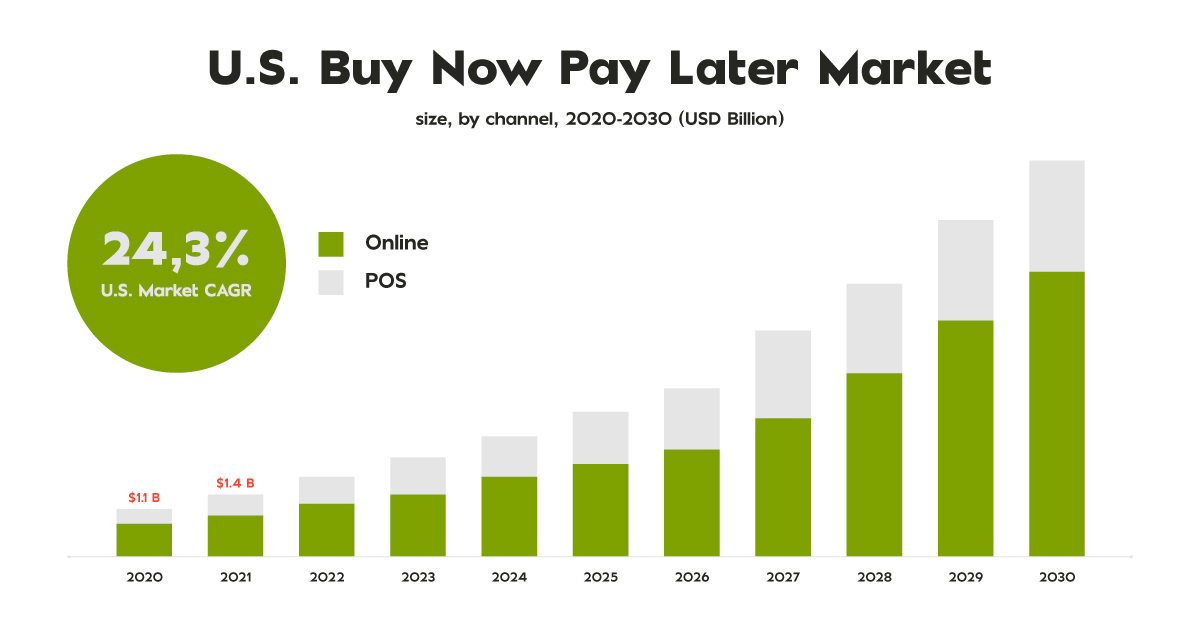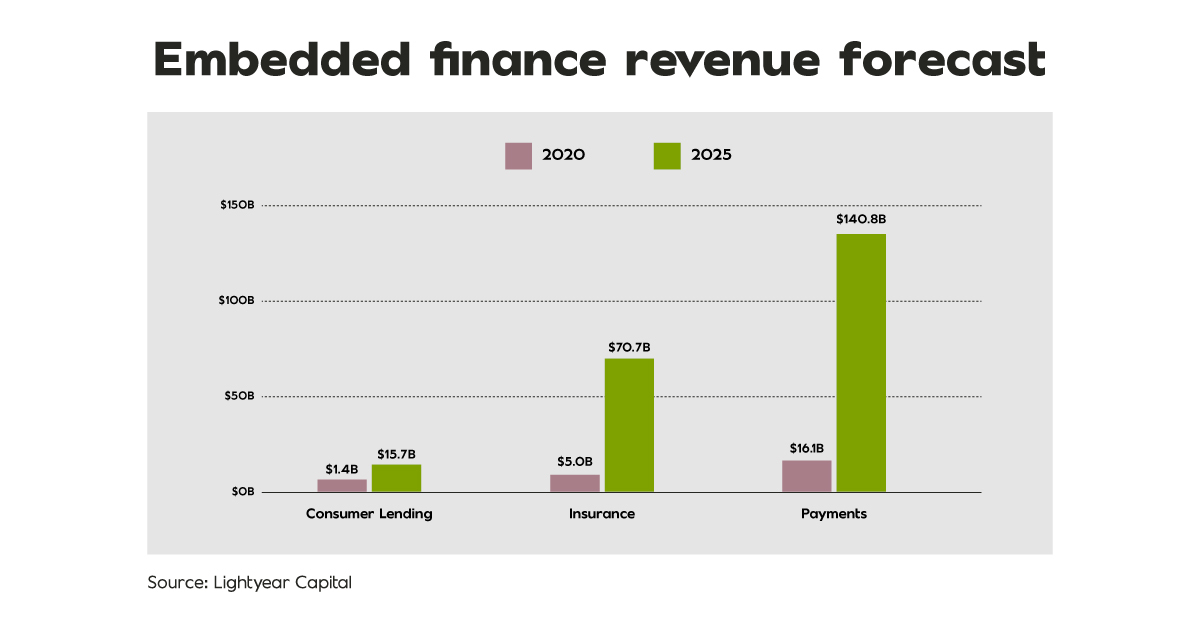The total transaction value for global digital payments is expected to reach around €11 trillion by 2026. The fact that millions of people, both inside and outside of the tech world, are switching to this payment method is a significant contributor to the growth of the FinTech market.
Because of the rapid and seemingly unstoppable rise of FinTech, it’s never too late to get into it. If you’re already in the industry, you can work on improving your existing platform with new functionalities to keep pace with the competition and market demands.
Let’s take a look at which FinTech industry trends we’re seeing on the rise so far in 2023.
AI and Machine Learning
It seems that AI and ML have been making their way into every industry since a few years ago, and that truly is the case. FinTech is also a part of this trend, with AI expected to power over 95% of all transactions over the next decade.
AI is used to gather and process data about customer accounts and enables institutions to monitor transactions. The insights gained in this way, in combination with cognitive automation, will allow companies to better manage client data and offer suggestions when it comes to managing finances. On top of that, better monitoring capabilities leave room for more control over quality and a way to catch human errors sooner.
Clients, on the other hand, benefit from AI and ML by using chatbots. If the assistant is not human, then they can be constantly available as 24/7 support. Their algorithms can be made to set appointments with bank representatives and consultants, answer questions, and analyze patterns in queries to forecast potential issues. Furthermore, these models can analyze factors that seem fraudulent before the client has been harmed. In fact, a study found a 20% reduction in investigative workload!
Buy Now, Pay Later
The BNPL model includes small installment loans, usually with no interest. It allows consumers to make a down payment for a product or service and pay the remainder at a later time – hence the name. The most famous FinTech giant to adopt this practice is PayPal, which allows users to split purchases up to $1500 into four equal parts that are paid every two weeks, with no late fees. E-commerce businesses are also starting to embrace the BNPL model. For example, Amazon will soon implement the option for purchases up to $50.
The danger of this model is that it may lead to debt. For example, 43% of Americans using BNPL services fell into debt in 2022, and it’s possible that this may become a recurring theme among global users. A study found that 34% of customers are behind on at least one payment.
The most recent movement in this trend is BNPL 2.0, in which the FinTech platform earns profit from the seller so that the buyer is no longer obligated to pay banking fees. Pioneers of this practice include well-known industry leaders such as Zilch, Apple Pay Later, and Afterpay.

Gamification
Gamification involves introducing typical elements of playing a game (such as points, competition, and rules) into something that was not traditionally regarded as a game. In the FinTech world, this practice is being implemented with the help of technology in order to help companies stay interesting and maintain high user satisfaction levels.
Utilizing gamification in your platform increases brand loyalty and makes the customer more engaged due to the sense of ownership they get when interacting with your company in this way. One example of a successful way to implement gamification comes from the British FinTech giant, Revoult, which rewards its customers with cashback for every tenth time they use their card.
If you’re looking to get a head start on this trend, Valcon can be of help. We have substantial experience in helping platforms increase their user-friendliness with gamification, and can ensure your clients’ satisfaction.
RegTech
All financial institutions, as well as institutions that handle information such as tax and income reports, need to be regulated by rules and laws that protect the safety of that data. The institutions must verify the accuracy of data and the legality of all their activities. This is usually done by submitting the necessary paperwork to specialized regulatory establishments. All of these tedious processes that involve loads of paperwork can be made much simpler with the use of regulatory technology, or RegTech.
RegTech solutions include software systems that automate procedures and monitor security, informing the users and bank workers if something seems problematic. This not only keeps the user’s information safe, but it also makes the bank worker’s job easier and safer – potential penalties for non-compliance can even reach millions.
Communication with regulatory establishments is made much simpler, and so is the tracking of financial crimes should the need occur.
Embedded Finance
This particular trend includes integrating financial technologies into other apps to make payments easier for the user. Although it’s not particularly new, groundbreaking leaps are being made both in terms of its improvement which, in turn, boosts popularity.
For example, Tesla uses Open Banking API to offer their customers the ability to purchase car insurance with each vehicle. Another example the public is more familiar with would be the embedded payment system available both in Google and Apple Pay.
This elevates the user's experience by reducing the number of vendors that are needed to successfully make a purchase. It also benefits the seller because it increases profits. In fact, embedded payments account for around 80% of revenue for early adopters. The main advantage for providers is that they now have the option to dictate the price per payment and even require additional fees rather than receiving a set payment.
If you need help in taking advantage of this very lucrative trend, feel free to reach out to us, and we’ll build the right features and capabilities you need to get the most out of your platform. Collaboration with us starts with the design and planning phase, in which we get all the information we need to create the best tailored solution for your business. After development, we make sure to test, validate, and continuously improve your platform based on user feedback.

Key Takeaways
As we’ve already established, these trends can be beneficial both to those just starting out in the FinTech industry and to those looking to improve their existing solutions. Integrating new functionalities is a surefire way to increase your users’ satisfaction and make your relationship more solid while simultaneously boosting your profits.
The most prominent trends of the year so far include:
- Using AI and ML to your advantage,
- The BNPL model,
- Gamification,
- RegTech,
- Embedding financial services.
Unlocking the Potential of Emerging Trends with Valcon
Introducing new functionalities doesn’t have to be difficult – if you’ve got the right team to help you out! Valcon’s experts combine years of experience in working with FinTech companies with their unique skill sets to provide all of our clients with extraordinary platforms.
Whether you want to add something innovative or need the whole solution built from just an idea, we’ve got you covered! Reach out to us today and be sure that your users will be more than satisfied!


